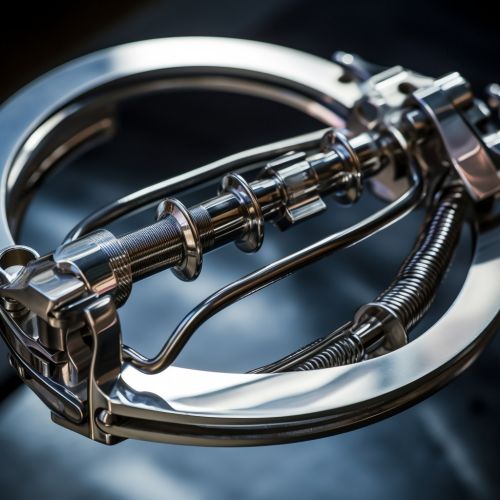Retractor (medical)
Overview
A retractor is a surgical instrument used in medical procedures to hold back the edges of an incision or tissue, providing surgeons with a clear view of the operating area. Retractors come in a variety of shapes and sizes, each designed for specific types of surgery.
History
The use of retractors dates back to ancient times, with early examples found in Roman and Egyptian medical texts. The development and refinement of retractors have paralleled advancements in surgical techniques and technology.
Types of Retractors
There are two main types of retractors: hand-held and self-retaining.
Hand-Held Retractors
Hand-held retractors require a surgical assistant to hold them in place during a procedure. Examples of hand-held retractors include the Senn retractor, the Rake retractor, and the Skin hook.
Self-Retaining Retractors
Self-retaining retractors have a mechanism that allows them to stay in place without the need for a surgical assistant. This type includes the Gelpi retractor, the Weitlaner retractor, and the Balfour retractor.
Design and Materials
Retractors are typically made from stainless steel for durability and ease of sterilization. Some retractors are made from titanium due to its lightweight and non-magnetic properties.


Uses in Different Surgical Procedures
Retractors are used in virtually all surgical procedures. The type and size of the retractor used depend on the nature of the surgery.
General Surgery
In general surgery, retractors like the Deaver retractor and the Richardson retractor are commonly used.
Orthopedic Surgery
In orthopedic surgery, retractors such as the Hohmann retractor and the Cobb elevator are used.
Neurosurgery
In neurosurgery, specialized retractors like the Greenberg retractor system are used to minimize damage to brain tissue.
Cardiovascular Surgery
In cardiovascular surgery, retractors like the Favaloro retractor are used to provide a clear view of the heart and surrounding vessels.
Safety and Complications
While retractors are essential tools in surgery, their use can also lead to complications. Prolonged retraction can cause tissue damage and postoperative pain. Therefore, careful use and selection of the appropriate retractor are crucial.
Future Developments
The future of retractors lies in the development of more specialized tools and the integration of technology. For example, retractors with built-in lighting or cameras can provide surgeons with better visibility during procedures.
